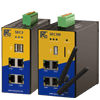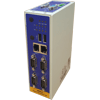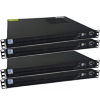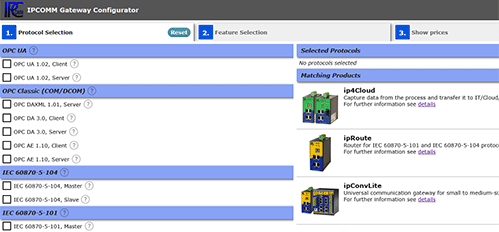IEC 60870-5-101
| 7 | Application Layer | IEC 60870-5-101 Companion Standard IEC 60870-5-5, IEC 60870-5-4, IEC 60870-5-3 | |
| 6 | Presentation Layer | n/a | |
| 5 | Session Layer | n/a | |
| 4 | Transport Layer | n/a | |
| 3 | Network Layer | n/a | |
| 2 | Link Layer | balanced IEC 60870-5-2 IEC 60870-5-1 (FT 1.2) | unbalanced IEC 60870-5-2 IEC 60870-5-1 (FT 1.2) |
| 1 | Physical Layer | RS232 (V.24) | X.24/X.27 |
- Single Command
- Double Command
- Setpoint
- Regulating step command
- Single indication [1 Bit] with quality
- Single indication [1 Bit] with quality and time tag
- Double indication [2 bit] with quality
- Double indication [2 bit] with quality and time tag
- Measured scaled value with quality
- Measured scaled value with quality and time tag
- Measured normalized value with quality
- Measured normalized value with quality and time tag
- Measured floating point value with quality
- Measured floating point value with quality and time tag
- Bitpattern [32 bit] with quality
- Bitpattern [32 bit] with quality and time tag
- Counter value with quality
- Counter value with quality and time tag
- Step position value with quality
- Step position value with quality and time tag
- Event of protection equipment with quality and time tag
Physical Layer
PCM, Full-duplex operation in balanced mode, half-duplex operation in unbalanced mode
Link Layer
Asymmetric transmission (unbalanced mode): Party line or point to point
Symmetric transmission (balanced mode): Only point to point is possibleApplication Layer
On-demand transmission (e. g. single indications, analogs, ...)
Spontaneous transmission (e. g. single indications with time tag, ...)
Direct command transmission (with select before operate)
Clock synchronization
File TransferAddress Space
Common Address of ASDU: 1..65535
Information object address: 1..16777215
Link address: 0..65535
-

ipConvOPC
Windows software package for universal conversion between diverse standard protocols
-

ipConv/Cloud
Software for universal protocol conversion in cloud environment and standard Linux distributions
-
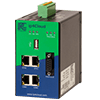
ip4Cloud/SEC3PB
Capture PROFIBUS data by eavesdropping and transmit it to Cloud/IT or SCADA services
-
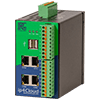
ip4Cloud/SEC3IO
Switch and monitor digital I/O states to transmit them to IT/Cloud/SCADA services
-
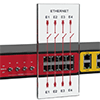
ipELB
4-Port Ethernet Line Breaker with relay controlled Ethernet ports and integrated I/O module
-
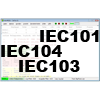
Fink WinPP Protocol Simulator
Simulationsoftware for IEC 60870-5-101, IEC 60870-5-102, IEC 60870-5-103, IEC 60870-5-104, SINAUT 8-FW 16-1024 PCM/DPDM
-
Ballia-Bhiwadi, India
Products: ipConv
Protocol Stacks: IEC 60870-5-101, Master IEC 60870-5-101, Slave Simatic TDC, MasterSEC SVC, Saudi Arabia
Products: ipConv
Protocol Stacks: IEC 60870-5-101, Slave IEC 60870-5-104, Slave IEC 61850, Client Simatic TDC, MasterI-SHAPE, Thailand
Products: ipConv
Protocol Stacks: IEC 60870-5-101, Slave XMAT, MasterBLS AlpTransit - Lötschbergtunnel, Switzerland
Products: ipConv ipRoute
Protocol Stacks: OPC DA 3.0, Server IEC 60870-5-104, Slave IEC 60870-5-101, Master IEC 60870-5-104, Master SNMP, Client
